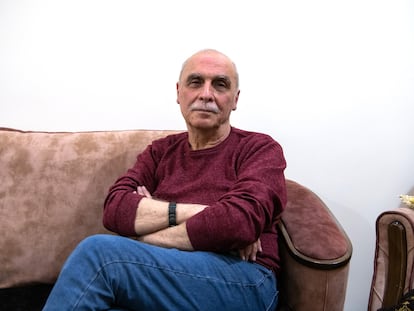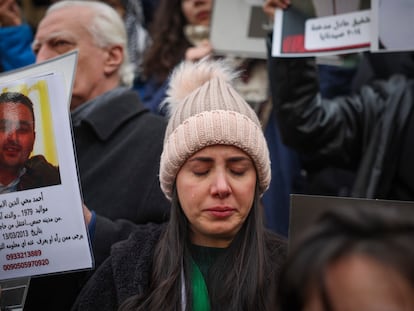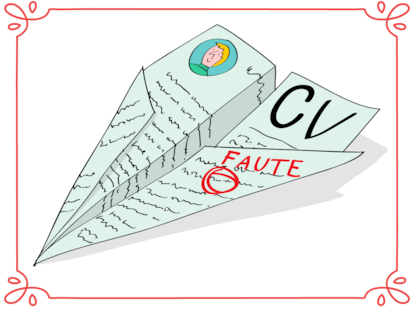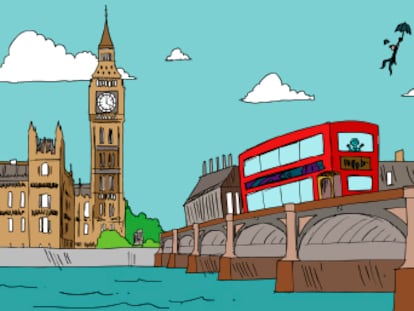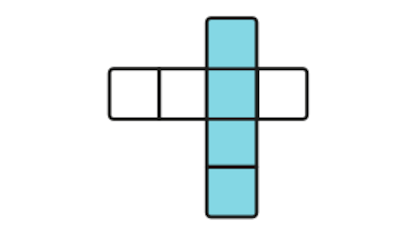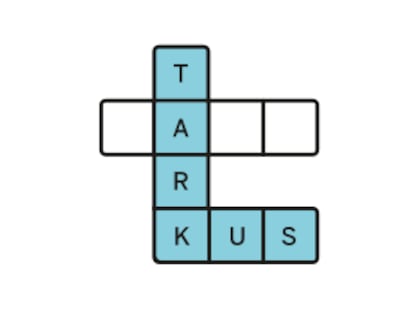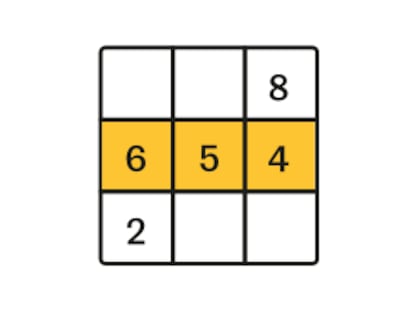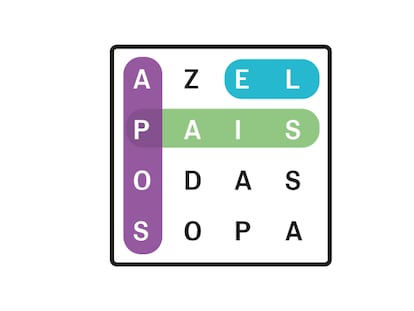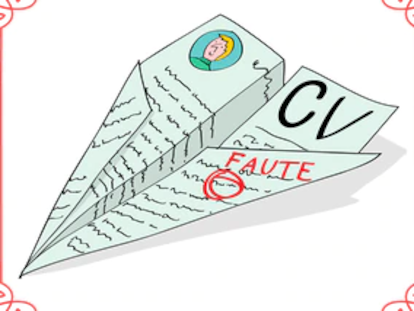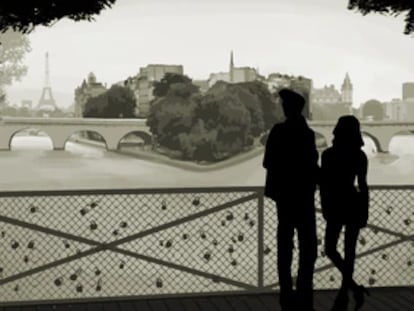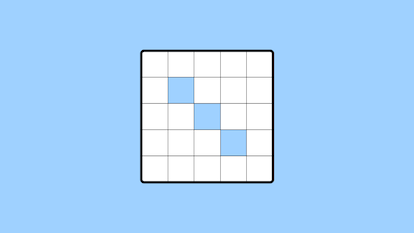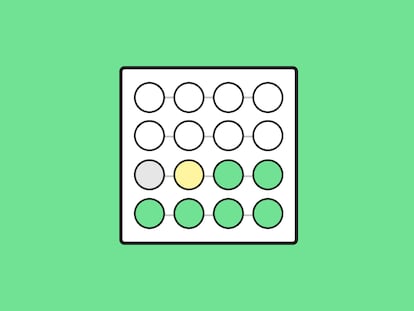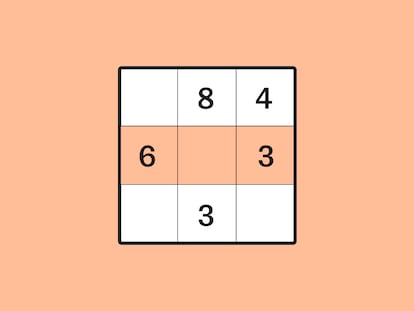A handful of psychiatrists for Syrians traumatized by 14 years of civil war
The country’s 17 million inhabitants, who have suffered through violence, displacement, poverty, a pandemic, and an earthquake, have only about 100 mental health professionals. Experts estimate that at least 10,000 are required
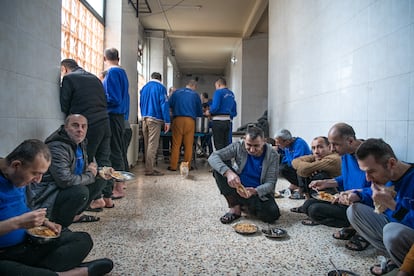

“I’m late for prison,” Dani repeats every few minutes. He is a 28-year-old Syrian who was released in December when rebel militiamen opened the doors of the Suwayda prison in the south of the country, before ending half a century of dictatorship under the Assad family. He believes he is “75 years old,” and despite having never set foot in Egypt, he claims to be from there, speaking with a pronounced accent from the Syrian province of Homs. He rubs his bony hands on the bed and slurs his words, the effect of the antipsychotics he takes to treat the trauma of six years in the dungeons of Bashar al-Assad’s regime. His parents admitted him to the Ibn Rush Psychiatric Hospital in Damascus on January 12, but the doctors have yet to get him to say what was done to him.
Syria is facing the trauma of a long civil war with a weak and inadequate healthcare network, with barely 100 psychiatrists. The UN estimates that one in 10 Syrians suffers from a mild or moderate mental health condition, while one in 30 suffers from a more severe one. Prolonged exposure to the conflict has increased the prevalence of mental disorders.
Dani (as he’s known at the hospital) was called up for mandatory military service in 2018. After a few months, his parents stopped hearing from him. “Dani reappeared last December in a video shared on social media, where a man said he’d found him wandering the streets,” says Massa el Maari, the psychiatrist in charge of the released patients at Ibn Rush. There are 19 former prisoners among the hospital’s 50 residents. Most are in their twenties.
The young man only asks for Abu Omar, the man who found him stranded in Suwayda and who provided him with shelter and affection for days until his family located him. Far from ending the nightmare they have experienced, his parents are living through a second ordeal with a returned son who doesn’t even recognize them and who accuses them of kidnapping him. With 100,000 people missing in the war, thousands of families continue the endless search for their loved ones, swallowed up in mass graves or dungeons. This is the case of Ali, whose face is plastered on the streets of the markets in the center of Damascus with a photo of him before being imprisoned, and another of him after, along with contact telephone numbers. Photos are posted on Facebook pages in a desperate yearning to wrest some information about loved ones.
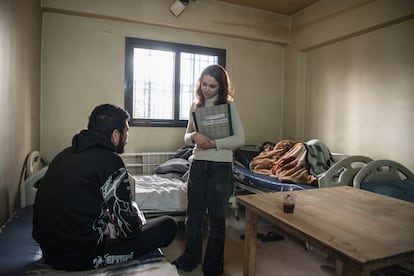
For two months, his family has shown him photos and told him stories from his childhood, bringing his friends over, but Dani has completely lost his memory, hiding the horrors he experienced in some recesses of his brain. He no longer knows who he is. Now he shares a room with other patients who have also been robbed of their dignity and sanity behind bars.
Several have arrived from Sednaya, on the outskirts of Damascus, dubbed “the human slaughterhouse” because torture and death were carried out within its walls on an industrial scale. The released prisoners have various medical problems resulting from physical abuse, notes El Maari: “Many arrive with half their teeth knocked out, their jaws broken by blows, and almost all with vision problems. Their mental health is the least urgent issue for them.” With beds limited, only those who pose a danger to others or themselves are admitted to Ibn Rush.
“Most of the inpatients and outpatients we treat suffer from depression, post-traumatic stress disorder, or psychotic episodes,” explains Dr. Ghandi Farah, director of the hospital. The hospital employs only four psychiatrists among the eight resident physicians. The staff has been reduced to a quarter since the start of the war. The hospital, named after the Andalusian Muslim philosopher and physician Averroes, is one of four state-run psychiatric hospitals in a country where half of the medical facilities have been damaged or destroyed.
Hospitals are subsidized, as is medication. In total, fewer than 100 psychiatrists are available across the country, serving a population of 17 million Syrians who have been exposed to 14 years of violence and poverty. About 75 specialists are in the area that remained under regime control, according to data collected by the local press in October during a seminar of the Syrian Association of Psychiatrists. Doctors estimate that some 10,000 specialists are needed. The vast majority of doctors fled in 2015 with the wave of refugees and few young Syrians opt for a specialization that is poorly paid and socially stigmatized as “shrinks.” “We need specialized training for our doctors on cases of torture victims,” says Farah, who predicts an outbreak of cases in the post-war period in the country.
In addition to the shortage of personnel and beds, there is a lack of medicines due to the sanctions imposed on the country and the bombing of Syria’s once important pharmaceutical industry. In the last decade, Russian or Iranian medicines, which are less effective than European ones, were imported.
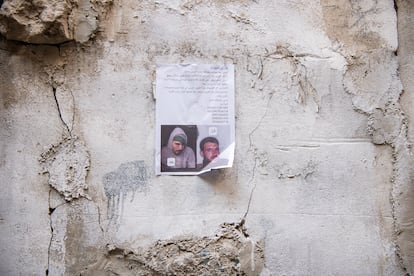
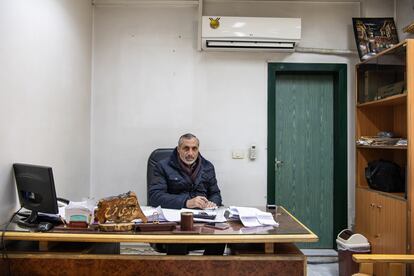
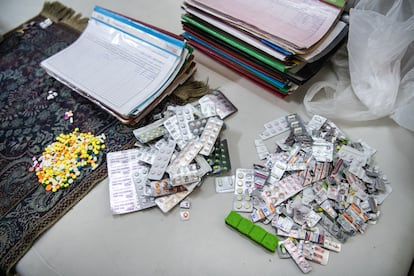
In a 2020 report, the UN warned that 75% of people with mental health disorders were not receiving any treatment, a situation that worsened across the board with the coronavirus pandemic. The final straw was the earthquake that struck the north of the country in 2023, leaving more than 7,000 people dead and a wave of depression and post-traumatic stress in the rebel-held region, with two psychiatrists for five million people.
A man, his body marked by wounds and his skin covered in a thick crust of dirt, hugs himself in confusion, as if to protect himself from the men loading him onto the stretcher of the ambulance taking him to the Ibn Khaldun Psychiatric Hospital on the outskirts of Aleppo, Syria’s second-largest city. He appears to be in his fifties and has a well-groomed beard, from which Ahmed Dakak, a resident psychiatrist at the center, deduces that he has been abandoned. The stigmatization in Arab societies leads these patients to be considered possessed by jinn spirits, and they end up being abandoned by their families. The center has 60 staff members, including security, nurses, and nine doctors, five of whom, like Dakak, specialize in psychiatry, serving half of Syria’s 14 provinces.
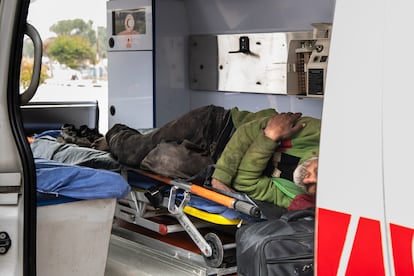
Poverty and mental illness go hand in hand. “Families already have enough to do just getting to the end of the day without having to take care of a sick person,” explains this doctor, who comes from a well-known family of psychiatrists. “Twenty percent of the 130 inpatients the hospital treats are picked up off the street.” Those without names are renamed by the staff so they can be addressed. The new arrival is taken to the showers through a corridor where several patients, dressed in blue uniforms, follow him with their eyes, wolfing down the hot food they receive before their medication. “We’re running out of drugs, so we have to ration it,” explains a nurse.
Most of the patients suffered from mental illness during the war due to irreversible trauma. In the women’s ward, the 27 patients crowd together, clinging to the bars of the dormitory doors. Most are no older than 30. In the nurses’ station, Marua stacks each patient’s file, reading out the diagnoses. Two elements are repeated in half a dozen cases: “Sole survivor of bombing” and “sexual abuse.” Women are doubly vulnerable in war, exposed to domestic violence, rape, and kidnapping, the nurses say.
Nada, 20, has been in and out of the center for six years, since a bombing raid by Russian or Syrian fighter jets shattered her life. Fate decreed that Nada survived an attack that left her three siblings and parents torn to pieces on the living room carpets. She had gone to the bathroom. Unable to process the scene, the young woman suffered a bout of bipolar disorder. She was 14 and was taken in by an aunt, only to later become pregnant after being raped by one or more of her cousins. Her daughter, who must now be about four, was abandoned in an orphanage. Nada wears a purple tracksuit and has her hair tucked under a white-striped hat. She is unaware of her daughter’s existence, nor of the fall of Bashar al-Assad’s regime. She keeps her hands folded in her lap: “Miss, I’d like to go home. Do you think my aunt will come looking for me soon?”
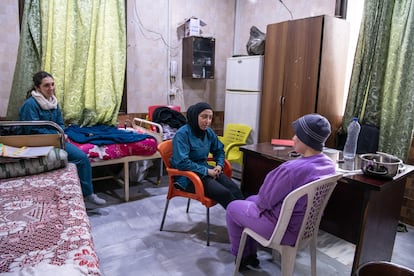
Sign up for our weekly newsletter to get more English-language news coverage from EL PAÍS USA Edition
Tu suscripción se está usando en otro dispositivo
¿Quieres añadir otro usuario a tu suscripción?
Si continúas leyendo en este dispositivo, no se podrá leer en el otro.
FlechaTu suscripción se está usando en otro dispositivo y solo puedes acceder a EL PAÍS desde un dispositivo a la vez.
Si quieres compartir tu cuenta, cambia tu suscripción a la modalidad Premium, así podrás añadir otro usuario. Cada uno accederá con su propia cuenta de email, lo que os permitirá personalizar vuestra experiencia en EL PAÍS.
¿Tienes una suscripción de empresa? Accede aquí para contratar más cuentas.
En el caso de no saber quién está usando tu cuenta, te recomendamos cambiar tu contraseña aquí.
Si decides continuar compartiendo tu cuenta, este mensaje se mostrará en tu dispositivo y en el de la otra persona que está usando tu cuenta de forma indefinida, afectando a tu experiencia de lectura. Puedes consultar aquí los términos y condiciones de la suscripción digital.
More information
Archived In
Últimas noticias
Russell Tovey: ‘I was advised many times not to come out, I don’t think there was many people who’d done that — and I feel really proud that I’m one of those that did’
Patagonia’s puma population soars thanks to unexpected prey: penguins
Merz tries to replace Macron at the helm of Europe
Indulgence, punishment and family dynamics: Maintaining a healthy relationship with food during the holiday season
Most viewed
- The low-cost creative revolution: How technology is making art accessible to everyone
- Christian Louboutin: ‘Young people don’t want to be like their parents. And if their parents wear sneakers, they’re going to look for something else’
- US sanctions against jailed cartel leader ‘El Marro’ highlight Mexico’s lack of control over its prisons
- Liset Menéndez de la Prida, neuroscientist: ‘It’s not normal to constantly seek pleasure; it’s important to be bored, to be calm’
- Families demand repatriation of bodies of Colombians who died in Ukraine: ‘This war is a slaughterhouse for foreigners’
